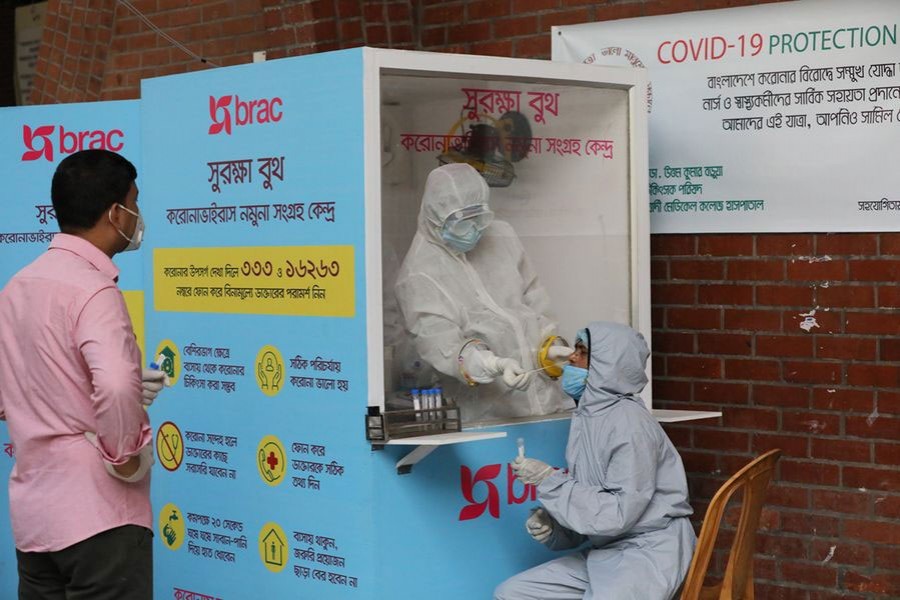
Published :
Updated :

The good news is that the positivity rate of Covid-19 cases has dropped below the double digit in the 24 hours till Saturday, September 3 last after three months. Also the number of death from the disease came down to the lowest after June 18 last when 54 deaths were recorded. Although, the infection rate was still close to the double digit at 9.82 per cent, the decline recorded over the past few days looks quite encouraging.
Epidemiologists, virologists and public health experts have also made no dire prediction of an imminent surge in the Covid-19 cases. Thank God, Bangladesh has been spared a crisis of the neighbouring India's scale. It is that country where the Delta variant of the disease finds its origin and evidently its way into the border districts of Bangladesh. Indian experts, though, have made a grim prediction of a third wave of the disease in their country with the added concern that this time children may be the primary victims.
Now the question is if Bangladesh stands any chance of being affected by the ripple effect as it endured following the Delta variant's merciless invasion. The Chattogram Veterinary and Animal Science University has confirmed after deoxyribonucleic acid (DNA) sequencing of 300 samples that no new variant has come up through mutation in the Chattogram region. It was the Delta variant that was on the rampage with 93 per cent patients suffering from it. If a similar study in other parts of the country were carried out, it could have developed an insight into the turn and twist of the pandemic.
Although the good tiding is highly reassuring, it would be foolish to lower the guard. A look around on a busy day, however, can easily flag away the assurance. It is not difficult to understand that people want to heave a sigh of relief with the new found freedom of movement after a prolonged home confinement. But is it not too early to behave as if coronavirus has taken its leave? A large number of people have stopped wearing face masks, gathering together without maintaining physical distancing. Maybe, of those who have received vaccine shots think they are immune from the disease. Others are perennially incorrigible. The director general of the Directorate General of Health Services (DGHS) has revealed that 90 per cent of cases now are from the villages. All because they were not vaccinated. They come to hospitals in district towns or cities only after the condition becomes critical. They are unwilling to seek treatment at upazila health complexes because they have no confidence in the medical care there.
So the decline in the rate of cases can be misleading. In the 24 hours that recorded the lowest death and rate of infection in about two and a half months and three months respectively, only 17,750 tests were conducted. A comparison with India may show why Bangladesh still has cause for concern. On Friday, 42,618 people were infected in India after the lowest ever cases of 31,000 on August 31. For the next few days the cases have remained over 40,000 mark. On the day 330 patients died. During the 24 hours under scrutiny, a total of 1.704 million samples were tested in India and that is a huge number. Now look at the day's positivity rate there, which is as low as 2.50 per cent as against Bangladesh's lowest in months at 9.82.
Now that the schools are going to be opened and children without vaccination will attend classes, health protocols have to be complied with to the fullest. Village schools deserve particular attention in this regard. This is incumbent on all involved in the process because 90 per cent cases have been reported from villages, as the DG of DGHS has claimed. In village schools, resources are scarce and unless they receive fund urgently to maintain health protocols and test students' health on a daily basis, a nightmarish scene can unfold in some places. Contact tracing of students is also necessary because some may get the disease at home from elders suffering from the disease. Vaccination of villagers is, therefore, a priority now. These are the prerequisites before bringing students to classes.


 For all latest news, follow The Financial Express Google News channel.
For all latest news, follow The Financial Express Google News channel.